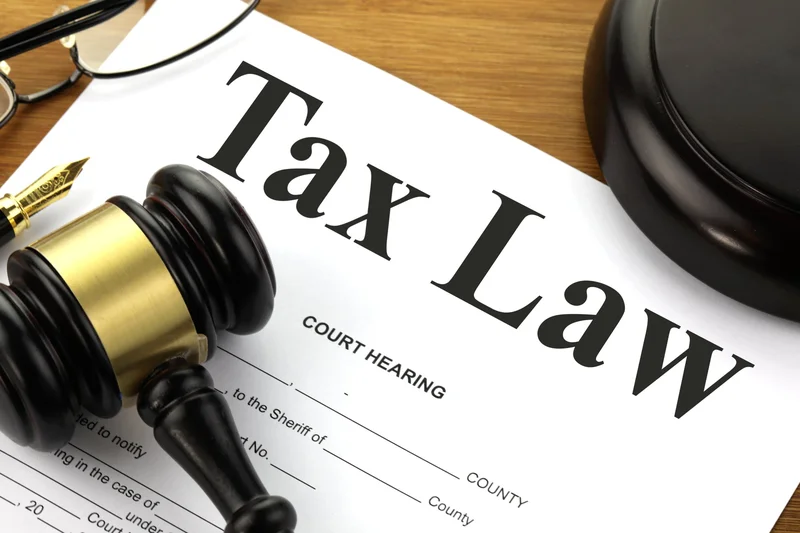Chicago's Property Tax Bonfire: Burning More Than Just Tax Bills
Chicago homeowners are feeling the heat, and not just from their furnaces. A recent "property tax bonfire" on the city's West Side (Lawndale, to be exact) wasn't just a symbolic gesture; it was a visceral expression of frustration over rising property taxes, with residents questioning where their money is going and whether they're seeing any return on their investment. It's a situation ripe for analysis, so let's dig into the numbers and see what they reveal.
The Numbers Game: Hikes Without Returns
The core complaint echoing from Lawndale residents is a familiar one: tax hikes without visible improvements. One resident, Thomas Worthy, reported a $977 increase in his property tax bill compared to the previous year. He tied the increase to a TIF (tax increment financing) district, a tool designed to fund local redevelopment. But here's the rub: Worthy claims he's "not being notified why" the money is being collected or how it's benefiting his neighborhood. This lack of transparency is a critical point. It isn't just about the money; it's about the perceived lack of accountability.
Milton Clayton, another Lawndale resident, succinctly captured the sentiment: "Now we're being taxed for prosperity." There's a sense that the community is being penalized for potential future growth, rather than benefiting from current investments. This raises a fundamental question: are these tax increases strategically aligned with community development goals, or are they simply a revenue grab?
The Illinois Policy Institute points out that Illinoisans already pay the second-highest property tax rate in the U.S., around 2.07% of their property's value annually. That’s more than double the national rate. Cook County, where Lawndale is located, consistently ranks among the nation’s most expensive for property taxes, even surpassing wealthy areas in California. This data highlights the severity of the tax burden on Chicago homeowners.
The fact that over half of a Chicago homeowner's property tax bill goes to Chicago Public Schools is also relevant. Are these funds being effectively utilized to improve educational outcomes in neighborhoods like Lawndale? Or are they being disproportionately allocated to other areas of the city? The data is needed to give an honest answer.
City Hall's Balancing Act: A Billion-Dollar Gamble
Chicago Mayor Brandon Johnson's proposal to extract a record $1 billion from TIF districts to balance the city's $16 billion 2026 budget adds another layer of complexity. (That’s a pretty substantial chunk of change, even for a city the size of Chicago.) This move would impact 68 of the city's 108 TIF districts, including several on the South and West Sides, raising concerns about potential delays in promised neighborhood improvements.

While supporters argue that this measure would shore up city finances and boost school funding, aldermen are understandably wary of jeopardizing local development projects. This situation presents a classic dilemma: short-term financial stability versus long-term community investment. It's a high-stakes gamble, and the residents of Lawndale are right to question whether they'll be the ones footing the bill, with little to show for it.
Cook County Treasurer Maria Pappas' announcement of payment plans for up to 13 months offers a temporary reprieve, but it doesn't address the underlying issue of rising property taxes. It's a band-aid solution, not a cure. Homeowners still want clarity on why their taxes are increasing and how those funds are being used.
I've looked at hundreds of municipal budgets, and the reliance on TIF districts for general revenue is always a red flag. It creates a system where neighborhood development is contingent on the city's overall financial health, rather than being a consistent, prioritized investment.
Smoke and Mirrors: Is This Just a Shell Game?
The "property tax bonfire" serves as a stark reminder that numbers on a tax bill represent more than just dollars and cents. They reflect a community's hopes, fears, and expectations. The frustration in Lawndale isn't just about the amount of the tax increase; it's about the perceived lack of transparency, accountability, and tangible benefits. As Chicago homeowners speak out on new property tax increases at bonfire on West Side reports, residents gathered to voice their concerns and demand answers.
Are Chicago's rising property taxes a necessary evil for a city grappling with financial challenges, or are they a symptom of a deeper problem of mismanagement and misallocation of resources? The answer, as always, lies in the data. But until that data is readily available and transparently communicated, the "property tax bonfire" will continue to burn, fueled by the frustrations of homeowners who feel they're being taxed for a prosperity they're not yet seeing.
